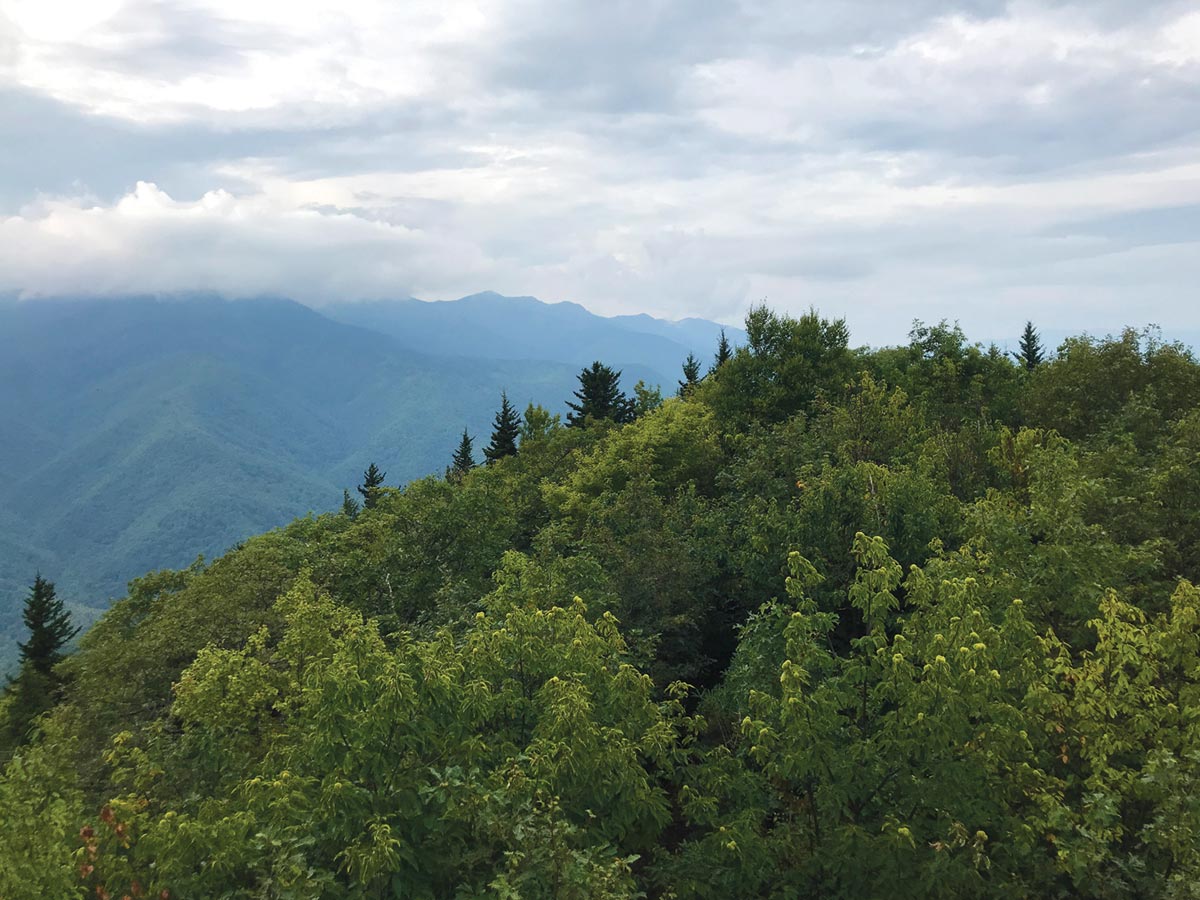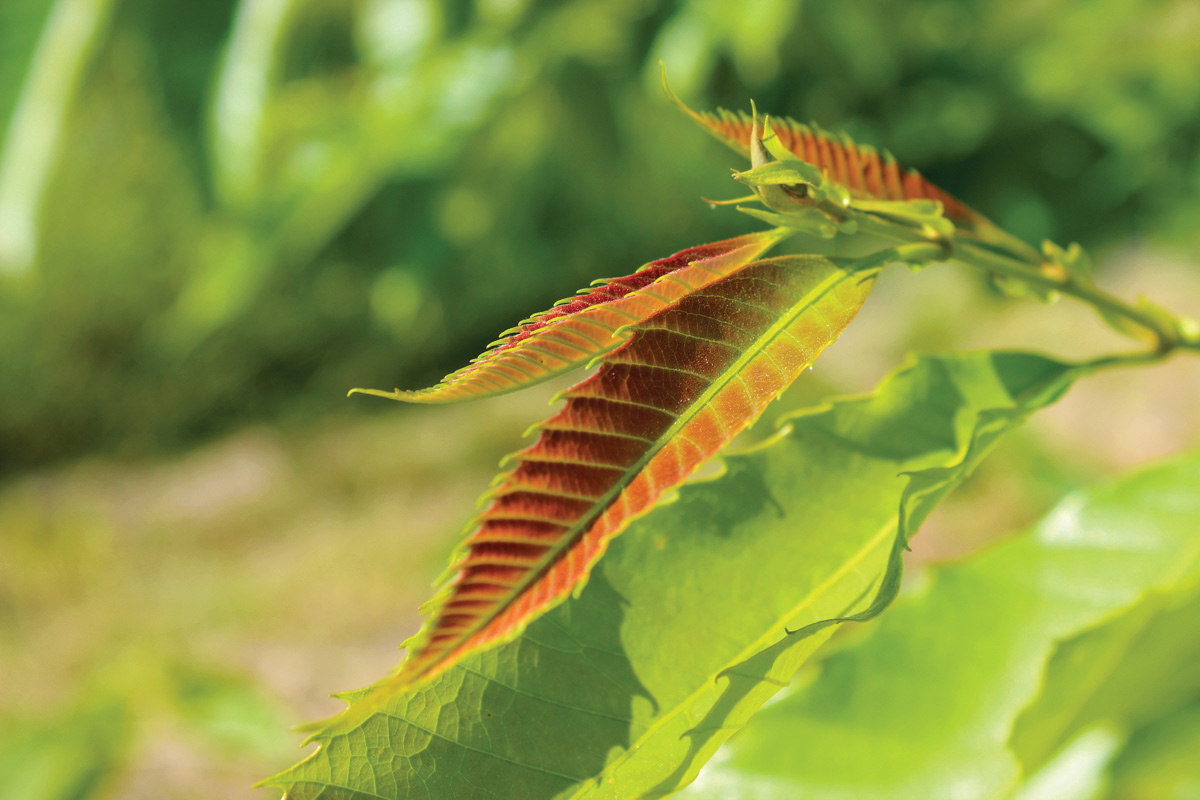
Chestnut blight was accidentally introduced in New York City in 1904 and spread outward through the Appalachians over the course of 40 years. Picture the Civilian Conservation Corps (CCC) crews of the 1930s digging new trail through hillsides of dying, dead, or cut-down chestnut trees, weaving the trail around fat tree stumps. The CCC constructed many of the first A.T. shelters from some of the last available chestnut wood.
Before the blight, the American chestnut tree was incredibly valuable to the ecology, culture, and economy of Appalachia. Mature chestnuts are effectively absent from today’s forests, their population reduced to small sprouts, but work is underway to bring them back, and A.T. hikers are uniquely positioned to help in this effort.

Called “the redwood of the East,” the American chestnut was the largest tree in eastern North America. The average height of a mature forest chestnut was 100-105 feet, with an average trunk diameter five-to-eight-feet wide. Some of the largest chestnuts on the western slopes of the Great Smoky Mountains grew as high as 130 feet, with trunks over 10 feet wide. It would take more than five people to link their hands around the base of one tree. Today, the remaining chestnuts persist as small stump sprouts on the forest floor and nearly all die back from blight before they can flower and reproduce.
The American chestnut was a foundation species, shaping the structure and function of an entire ecological community. After the last frosts (usually late June), chestnut trees would produce long white male flower stalks called catkins that feed honeybees and other pollinators, and pollinate small female flowers on mneighboring chestnut trees. Each pollinated female flower grew into a spiny capsule called a bur that contains three nuts. Every autumn, the plentiful burs would open up and nuts would fall to the ground, feeding wild turkeys, passenger pigeons (now extinct), blue jays, black bears, deer, racoons, squirrels, and chipmunks. The leaves of American chestnuts are a preferred food for insect larvae and caterpillars, which in turn are eaten by other animals such as fish and birds. Even the soil is bolstered by the chestnut tree, because its leaves contain more nitrogen, phosphorus, potassium, and magnesium than other trees.

The chestnut tree was fundamental to the livelihood and culture of both Indigenous people and European-Americans. Among many tribes, the Indigenous word for chestnut was similar: chinkapin, chinquapin, chincapin, chincopin, and chechinquamin (as translated into European languages). The Cherokee, Iroquois, and Mohegan (Mohican) tribes in particular would burn and clear the forest to favor the growth of chestnuts, which they used for food, medicine, kindling, and woodworking. The nuts from the chestnut tree were roasted or ground into flour, in addition to many other culinary uses. Farmers would turn their hogs loose in the forest to fatten up on the nuts. Chestnut timber is straight-grained and rot resistant, making it useful for fence posts, building construction, furniture, and musical instruments. Tannins from the wood and bark were used to tan leather products. The devastating loss of the chestnut tree coincided with the great depression, deepening the hardship of that time.
The Appalachian Trail runs through the heart of the American chestnut’s historic range, making hikers perfectly positioned to find the rare chestnut trees that still persist in the forest. These wild American chestnuts are needed so that they can be bred with the blight-resistant trees produced by TACF, diversifying the gene pool and integrating local adaptations. On your next hike, keep an eye out for long canoe-shaped leaves with edges that have large prominent teeth that curve back on themselves like breaking waves. If the tree has long white catkins or spiny green burs the size of your fist, you were lucky enough to find a tree that survived to maturity. Your help finding one tree will contribute to restoring not only the American chestnut species, but the whole ecological community it supports.
acf.org/resources/identification/